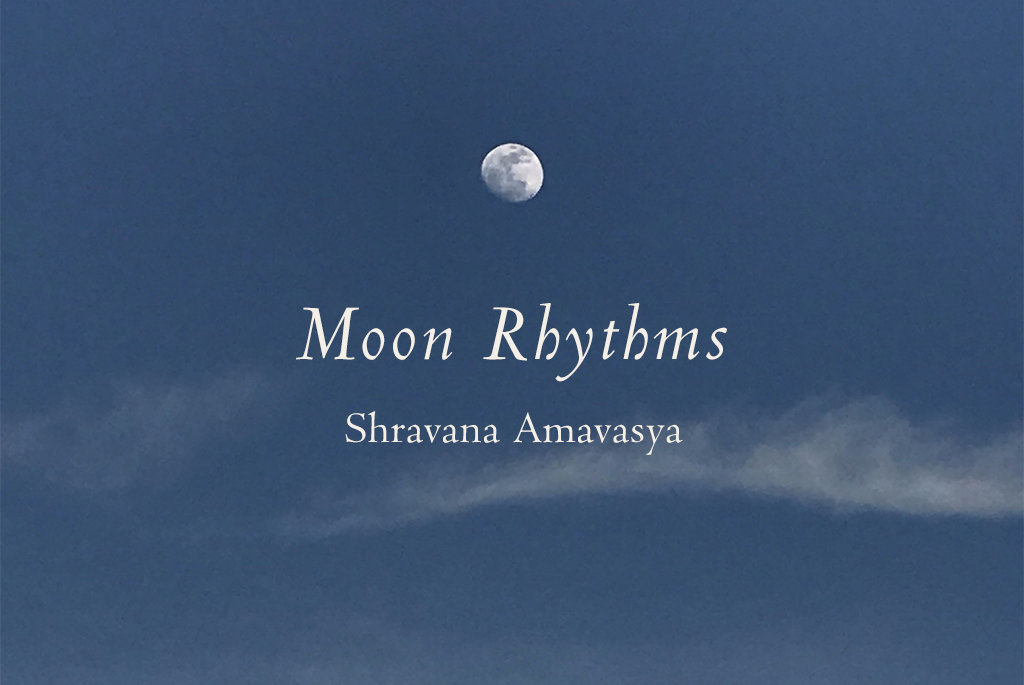Nilakshi Sharma

A few years ago the Werewolf diet, aka the Moon diet began trending, endorsed by many celebrities such as Madonna. Simply put it involved a 24-hour water or juice fast during the full and new Moons. But fasting in alignment with the Moon is neither a trend nor new information in the subcontinent. Rather it is an age-old practice that is the result of a conscious alignment with the lunar phases.
For practitioners of Sanatan Dharam it was one amongst many practices that sought to keep our body and mind in harmony with Rta or cosmic cycles. But much of the wisdom behind this traditional fasting practice has been forgotten, along with the benefits. Interestingly scientists researching these age-old practices are beginning to validate many traditional practices such as fasting. But to fast in synchronisation with the Moon requires awareness of the lunar phases and the tithis of the Moon.
Lunar Cycle & Phases
In its 29.5 day lunar cycle, simplified as a 30 day cycle for convenience, the Moon is constantly changing. You can choose to see the New Moon or the Full Moon as the start of the cycle or month. Either way, one cycle of the Moon constitutes the traditional month. When you start and end the month with the Full Moon or Purnima it becomes Purnimanta. When you start and end the month with New Moon or Amavasya it becomes the Amanta.
Each Moon month features two phases - Waxing and Waning.
Waxing or Shukla Paksh: For 14 days after the New Moon or Amavasya, the Moon grows in size until it culminates in the Full Moon or Purnima on the fifteenth night. This is the waxing phase of the Moon. Known as the bright phase, it is referred to as the Shukla Paksh. Traditionally it is a time of increase. Our bodies absorb nutrition better and increase in strength. Our energy and emotions increase in this expansive, outward phase of growth.
Waning or Krishna Paksh: For 14 days after the Full Moon or Purnima the Moon decreases in size until we reach the night of Amavasya or New Moon on the fifteenth night. This is the waning phase of the Moon. This phase of gradually decreasing moonlight is known as the Krishna Paksh. Traditionally it is a time of withdrawal. This lunar phase lends itself naturally to detoxification and cleansing of the body and mind. Our energy and emotions turn inwards; this is the time to introspect.
In both its waxing (Shukla Paksh) and waning (Krishna Paksh) phases the Moon goes through 15 stages that we traditionally call tithis. In our tradition we have identified the same three tithis in both phases as ideal for fasting.
Fasting Tithis
Chaturthi: The fourth day of both the waxing and waning lunar phases has traditionally been a fast day. The Chaturthi which comes after Purnima or the Full Moon during Krishna Paksha is known as Sankashti Chaturthi. The Chaturthi which comes after Amavasya or New Moon during Shukla Paksha is known as Vinayak Chaturthi. Chaturthi is a tithi dedicated to Ganesh, who is thought to be born on this tithi.
Ekadashi: The 11th night of the Moon in either phase (waxing or waning) is considered a very auspicious date for fasting. Traditionally there is a prohibition on the eating of rice on this tithi even if you are not fasting. Each Ekadashi has its own legend, lore and presiding deity.
Purnima & Amavasya: The fifteenth tithi of the Moon is the night of Purnima or Amavasya, depending on the lunar phase – waxing or waning. Both Amavasya and Purnima were traditionally considered days of fasting.
Chandrayan Vrat
One of the most austere lunar fasts traditionally undertaken is the Chandrayan Fast. Observed for a whole Moon cycle, it consists of eating as per the Moon tithi and the Moon phase. Started on a Full Moon or Purnima – it begins with the consumption of 15 mouthfuls of cooked food after moonrise. As the Moon wanes so do the number of mouthfuls consumed. So, 15 mouthfuls on Purnima, 14 mouthfuls the next night on Chaturdashi, 13 on Trayodashi and so on till it becomes a water only fast on Amavasya or New Moon night. Then for the next 15 days, the mouthfuls increase to match the tithi of the waxing phase of the Moon. And the fast finally culminates on the Purnima night with fifteen mouthfuls of food.
The stipulated food for the Chandrayan vrat is either cooked Yava grains, Rice or a combination of vegetables, curds, ghee, fruits, roots and water. Yava is better known as Barley in English and Jau, Cheno, Jav, Barlibiyam in different vernacular languages.
Fasting Benefits
If one observes the traditional lunar fasts – Chaturthi, Ekadashi, Purnima and Amavasya, then you end up fasting for 6 days in each month or Moon cycle. Research today validates the health benefits of regular fasting.
Preliminary studies suggest that a regular fasting practice may delay the onset of age and lifestyle related diseases such as Type 2 Diabetes and Cancer and neurodegenerative diseases such as Alzheimer’s. Fasting can also lead to better cognition, improve memory and ultimately increase lifespan. When we fast in effect we create a physiological shift in our bodies - from digestion the focus shifts to cellular cleansing. It also enhances digestion over time, helps you reconnect with your hunger cycle – you recognise when you are hungry as opposed to the mindless eating based merely on taste cravings. And then there is the other benefit of lessening craving. Regular fasts also help reset your taste palate and reduce taste cravings such as sugar.
In a culture where fasting was a way of life, there is also a sophisticated knowledge-based tradition of how to fast - what foods to eat and what to avoid. Some people are comfortable doing water fasts; others observe a fast by eating fruit only. And then there is the whole list of fasting foods – Sabudana (Sago), Sweet Potato, Kuttu Atta (Buckwheat), etc. You should fast within your comfort zone and slowly build up your fasting capacity.






HI,
Thank you for informing article.
When fasting on lunar days do you start a fast with moonrise and finish with moonset?
Or do you start fasting any time of day and carry it on for 24 hours?
thanks,
Bostjan